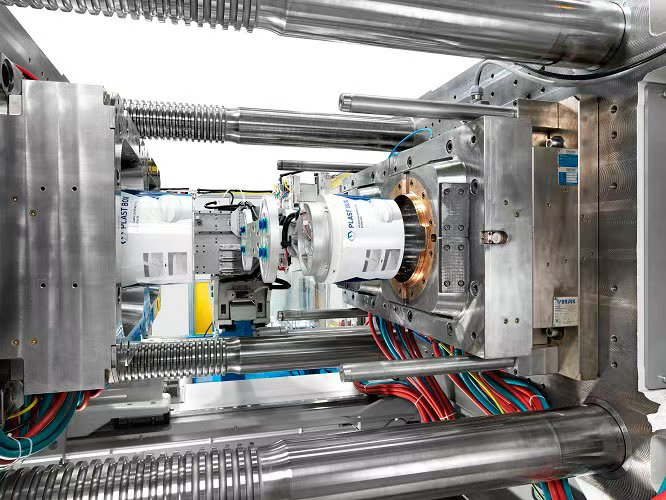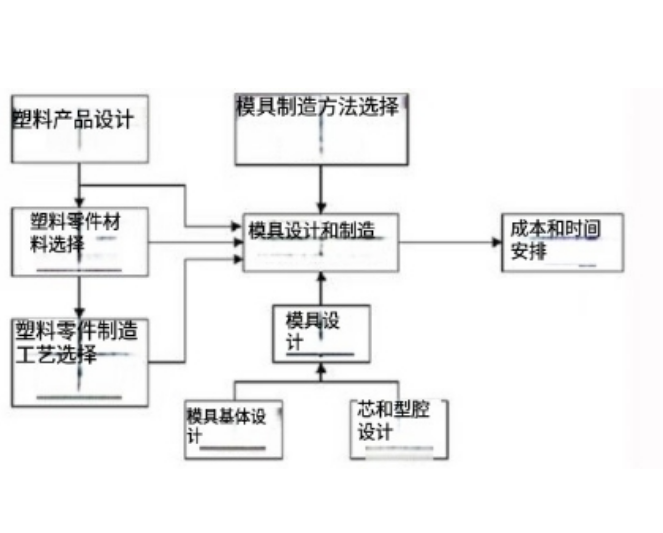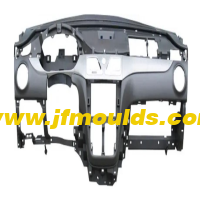Injection mold industry: Breaking through technological barriers and seizing the new track of intelligent manufacturing
Injection mold industry: Breaking through technological barriers and seizing the new track of intelligent manufacturing
Amid the global manufacturing industry's accelerated transformation towards intelligence and greenness, the injection mold industry is undergoing unprecedented changes. As a core link in the production of plastic products, injection molds not only determine the forming accuracy and production efficiency of the products, but also become a key chip for enterprises in international market competition. In 2025, with the in-depth penetration of 3D printing and AI technologies, as well as the explosive growth of emerging fields such as new energy and healthcare, the injection mold industry is embracing dual opportunities of technological iteration and market reconstruction.
1, emerging fields give rise to a new blue ocean of mold demand
(1) New Energy Vehicles: The ultimate pursuit of lightweighting and integration
The rapid development of new energy vehicles has opened up a brand-new track for the injection mold industry. To meet the demand for driving range, car manufacturers have put forward strict requirements for the lightweighting of components. Take the battery pack casing as an example. Traditional metal materials are gradually being replaced by high-strength composite materials, which requires injection molds to have higher pressure resistance and forming capabilities as well as higher processing accuracy for complex structures. A leading mold enterprise has developed a carbon fiber reinforced plastic (CFRP) mold. By optimizing the runner design and cooling system, the weight of the battery pack shell has been reduced by 40%, while the production efficiency has been increased by 30%.
In addition, the popularization of integrated die-casting technology has driven the development of injection molds towards larger and more integrated sizes. The structural innovation of Tesla's 4680 battery has prompted mold enterprises to develop giant injection molds over 3 meters in size. Such molds require multi-slider and multi-ejection mechanism designs, posing extremely high challenges to manufacturing processes and equipment. Data shows that the market size of injection molds for new energy vehicles is expected to exceed 20 billion yuan in 2025, with an annual growth rate of 18%.
(2) Medical and health care: The demand for clean production and customization has exploded
In the post-pandemic era, the demand for medical equipment and consumables continues to grow, and strict standards are put forward for the cleanliness and biocompatibility of injection molds. Molds used for products such as syringes and dialyzers need to adopt special processes such as mirror polishing and nano-coating to ensure that the surface roughness Ra is ≤0.05μm and prevent bacterial adhesion. A certain medical mold enterprise has introduced an ISO Class 7 clean workshop, achieving dust-free management throughout the mold production process and successfully entering the international high-end medical device supply chain.
The rise of personalized medicine has driven the application of 3D printed molds in fields such as dentures and surgical guides. By directly generating mold models through CT data, the rapid manufacturing of patient-specific products can be achieved. Currently, the annual growth rate of the customized medical mold market exceeds 25%, becoming a new engine for industry growth.
Commodity Mould_Taizhou Jiefeng Mould Co.,Ltd. (jfmoulds.com)

2, disruptive technologies reshape the competitive landscape of industries
(1) AI+ Digital Twin: Optimizing the entire life cycle of molds
AI technology is rewriting the rules of mold design and production. The traditional mold design that relied on engineers' experience is being replaced by AI algorithms. By analyzing millions of mold data through machine learning, the system can automatically optimize the gate position and cooling water channel layout, reducing the design cycle by 60%. A certain mold enterprise in Germany has applied AI to design mobile phone case molds, reducing the average number of mold trials from 7 to 2, and lowering the cost by 40%.
Digital twin technology has brought mold production into the era of "virtual rehearsal". By establishing a three-dimensional digital model of the mold, real-time mapping of data such as temperature and pressure during the production process can be achieved, enabling early prediction of mold wear, product defects and other issues. A certain home appliance enterprise has utilized digital twin technology to extend the mold maintenance cycle by 50% and increase the overall equipment effectiveness (OEE) to 85%.
(2) Green Manufacturing: A Sustainable Revolution from Materials to Processes
The increasingly strict environmental protection regulations are forcing the industry to undergo a green transformation. The wide application of bio-based plastics (such as polylactic acid PLA) requires mold enterprises to develop molding processes that are compatible with new materials. The degradable plastic mold developed by a certain enterprise, through special temperature control and demolding design, has solved the problems of poor material fluidity and easy degradation. The product has been successfully applied in the field of food packaging.
Mold remanufacturing technology has also made breakthroughs. By adopting surface treatment processes such as laser cladding and micro-arc oxidation, the performance of used molds can be restored to over 90% of that of new ones. At present, the remanufacturing rate of molds in China is less than 15%, while in Europe and America it has exceeded 40%. The future market potential is huge.
3. Changes and Constants in the Global Competitive Landscape
(1) European and American enterprises: Technological Monopoly and Service Transformation
Mold enterprises from Germany and the United States, relying on their profound technological accumulation, have continuously occupied the high-end market. They build technological barriers through patent layout. For instance, German enterprises hold over 60% of the world's core patents in the field of hot runner technology. Meanwhile, European and American enterprises are accelerating their transformation towards the "mold + service" model, providing full-chain solutions including process optimization, equipment leasing, and data analysis. The proportion of service revenue has reached 35%.
(2) Chinese Enterprises: From Cost Advantage to Technological Breakthrough
The share of Chinese mold enterprises in the global market has exceeded 40%, but they still rely on imports for the high-end market. However, leading enterprises are achieving breakthroughs through technological innovation. The ultra-precision injection molds launched by Haitian Plastic Machinery have a precision of up to 0.005mm, breaking the foreign monopoly. The intelligent mold management system developed by a certain enterprise in Dongguan can monitor over 2,000 mold devices worldwide in real time, and the service response speed has been increased by 70%.
Small and medium-sized enterprises focus on niche fields and form a competitive advantage of being "specialized, refined, distinctive and innovative". A certain enterprise in Zhejiang Province has been deeply engaged in the production of cosmetic packaging molds. Through distinctive processes such as multi-color injection molding and microstructure forming, it has captured 70% of the domestic high-end lipstick mold market share.

Two Color Mould_Taizhou Jiefeng Mould Co.,Ltd. (jfmoulds.com)
4. Industry Pain Points and Solutions to Break Through
(1) Three core challenges
1. Technological bottleneck: High-end die steel and precision processing equipment still rely on imports. Domestic enterprises have shortcomings in key technologies such as mirror surface processing and deep hole processing.
2. Talent gap: There is a scarcity of compound talents who are proficient in both mold design and intelligent manufacturing, with a talent shortage of over 500,000 in the industry.
3. Homogenized competition: Overcapacity in the mid-to-low-end market, enterprises are trapped in price wars, and the average profit margin of the industry is less than 8%.
(2) Future Breakthrough Paths
1. Collaborative innovation among industry, academia and research: A joint research and development mechanism among enterprises, universities and research institutes has been established. For instance, Huazhong University of Science and Technology has jointly built a mold intelligent manufacturing laboratory with enterprises, and has overcome a number of key technologies.
2. Digital Transformation: Promote cloud platforms and industrial Internet applications to achieve digital management throughout the entire process of mold design, production, and service. After a certain enterprise launched the mold full life cycle management system, the on-time delivery rate of orders increased from 75% to 95%.
3. Global layout: By means of building factories overseas, mergers and acquisitions, etc., avoid trade barriers and enhance the say in the international market. Some enterprises have set up production bases in Southeast Asia, effectively reducing transportation and tariff costs.
Standing at the new starting point of 2025, the injection mold industry is moving from "manufacturing" to "intelligent manufacturing". Those enterprises that can grasp technological trends, deeply cultivate niche markets, and embrace digital transformation will stand out in this wave of industrial upgrading and reshape the competition in the global injection mold industry
Related News
How can the top white and surface elevation of the mold be solved
2025-08-26
How can the top white and surface elevation of the mold be solvedThe top white o...
Exhaust the parting surface of the mold
2025-10-15
Exhaust the parting surface of the moldThe exhaust grooves on the parting surfac...
Exploring Injection Molds: The Cornerstone of Precision Manufacturing
2025-07-02
Exploring Injection Molds: The Cornerstone of Precision Manufacturing In the ...
Injection molds: Specialized manufacturing, empowering new quality productivity in the industry
2025-07-14
Injection molds: Specialized manufacturing, empowering new quality productivity ...
Solutions for air streaks, charring, wire jamming, height elevation or trapped air in molds
2025-08-14
Solutions for air streaks, charring, wire jamming, height elevation or trapped a...
Solutions for trapped gas burning, surface wire clamping and insufficient glue in the inner column of the mold
2025-08-11
Solutions for trapped gas burning, surface wire clamping and insufficient glue i...




